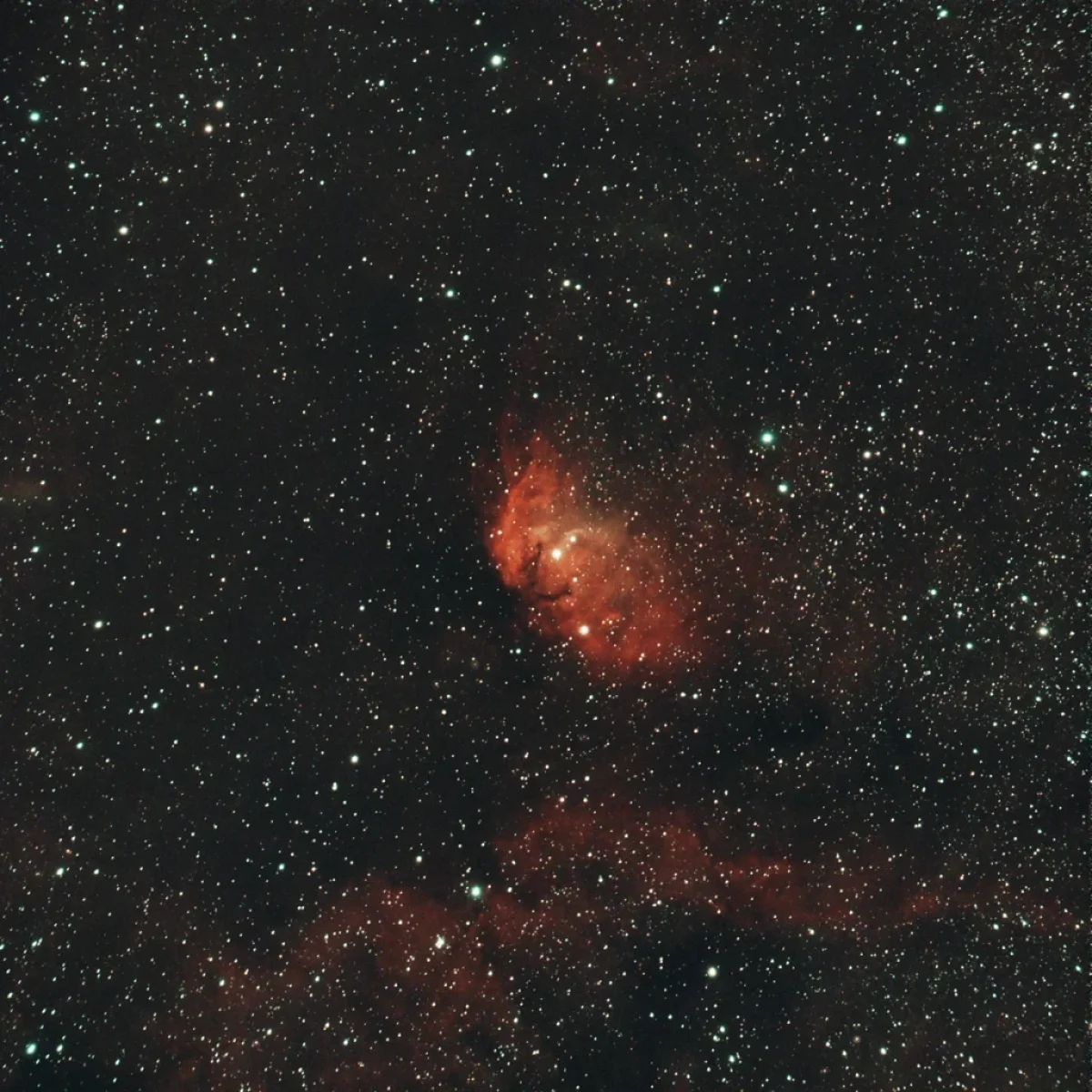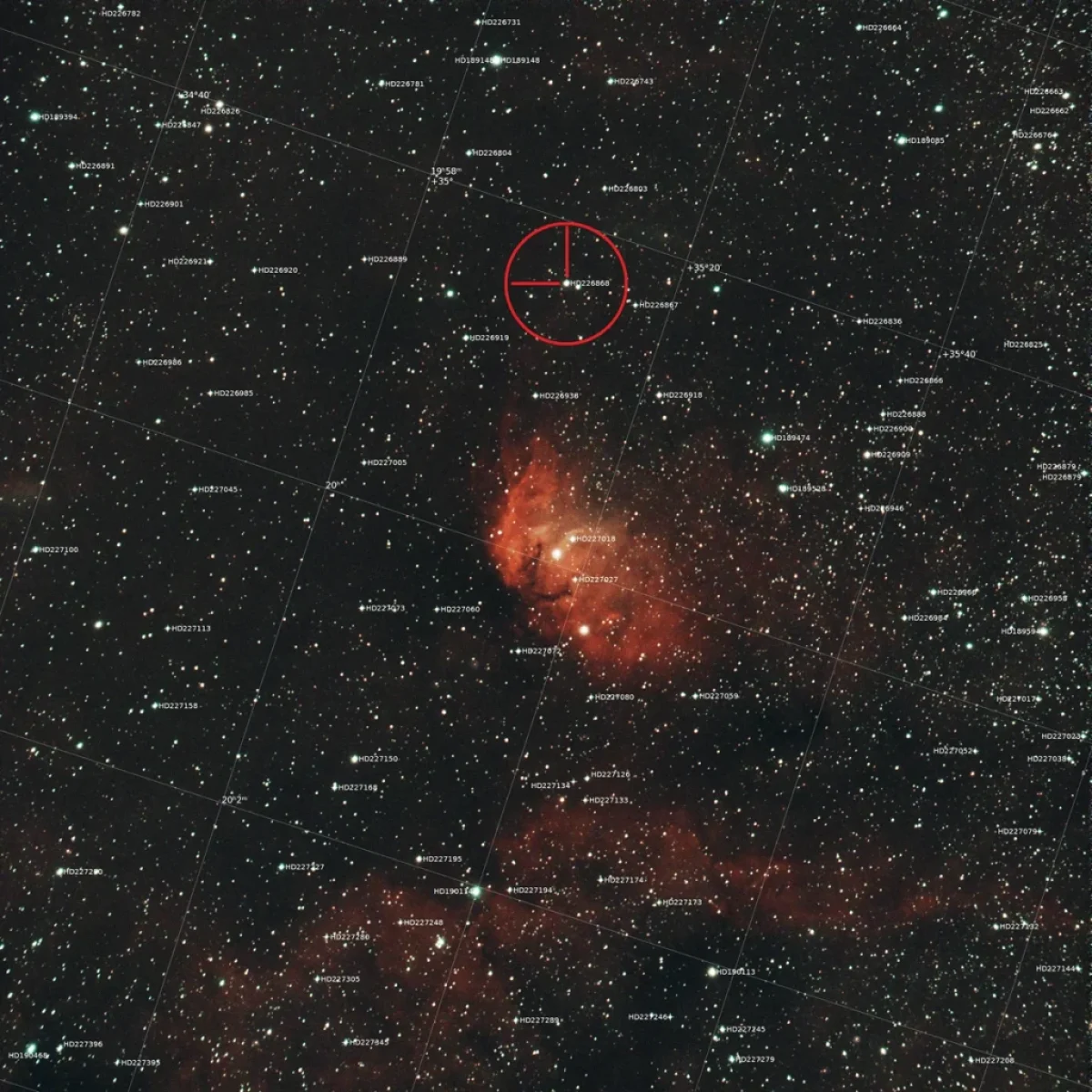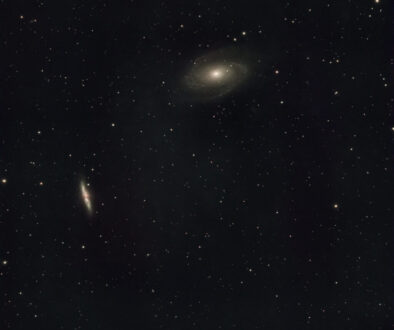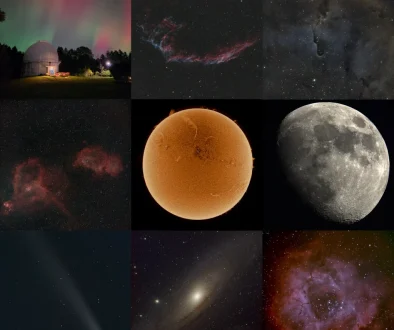I photographed the Tulip Nebula and a black hole (well, kind of)!
August 2nd, 2022: another amazing stargazing night with the Tulip Nebula in Cygnus.
Its distance is approximately 6,000 light years and the apparent magnitude is 9.0. The apparent size in the sky is 16×9 arcminutes (its diameter is estimated to be about 70 light years). The emission from the Tulip Nebula is powered by ultraviolet radiation of a hot young star named HD227018, visible near the nebula’s center (see also the annotated image to locate the star).
Curious fact: in my image I also captured the first confirmed black hole candidate: Cygnus X-1 … well kind of! Let me explain.
In the field of view of the image there is a supergiant star named HD226868 (or V1357 Cygni). This hot supergiant star is located about 7,000 light-years from Earth in the constellation Cygnus and is revolving about an massive unseen companion.
In 1964 astronomers at the U.S. Naval Research Lab discovered a X-ray source in this area of the sky and they called it Cygnus X-1. In 1971 the Uhuru X-ray satellite was launched and examined several X-ray sources, including Cygnus X-1. This object emitted X-rays that flickered in intensity every millisecond, but when astronomers went to observe it, they discovered that it was not visible.
Then an American astronomer called Tom Bolton came to Canada from the States to do his postdoc at the University of Toronto. He spent a lot of his time at the David Dunlap Observatory in Richmond Hill to analyze the spectrum of the closest object, HD226868 (our supergiant star), and noted that it had an orbit which would indicate that it was a part of a binary system with a period of 5.6 days (source: http://spacing.ca/toronto/2013/06/25/how-the-first-black-hole-ever-discovered-was-discovered-at-the-university-of-toronto/).
Analysis of the optical observations of HD226868 showed the mass of the ‘unseen’ companion star (the X-ray source) to lie in the range 6–15 solar masses, well above the limit allowed for a neutron star (≤ 3 solar masses) or white dwarf (≤ 1.4 solar masses). Therefore the hypothesis that Cygnus X-1 is a black hole is the rapid and irregular variability of the X-ray emission. This behaviour can be caused by the matter torn from the optical supergiant onto a black hole. So the Cygnus X-1 black hole candidate is not visible, but we know that it’s there and is part of the HD226868 binary system!
P.S.: a special thanks to my friend Chris Vaughan for inspiring me through his article “Canada in the stars” the July/August 2022 issue of SkyNews.
Setup
Scope: Explore Scientific ED80CF APO refractor
Mount: Celestron AVX mount
Imaging Camera: ZWO ASI533 MC PRO (cooled at -10°C)
Filters: Optolong L-Extreme
Guiding camera: ZWO ASI224 MC with a IR Cut filter, PHD2
Guide Scope: Orion Deluxe Mini 50mm Guide Scope
Software: NINA, CPWI, PixInsight, NoiseXTerminator for PixInsight
Total Integration Time: 1 hour (20x180s, dark, flat, bias)
The Tulip Nebula (Sh2-101) in Cygnus constellation is a beautiful emission nebula located in constellation Cygnus.
Note: Scroll the slider to switch between the images of the Tulip Nebula and the annotated image that indicates where HD226868 and its companion, the first black hole candidate Cygnus X-1, are located. You can also open the annotated image of the Tulip Nebula in its original resolution.




